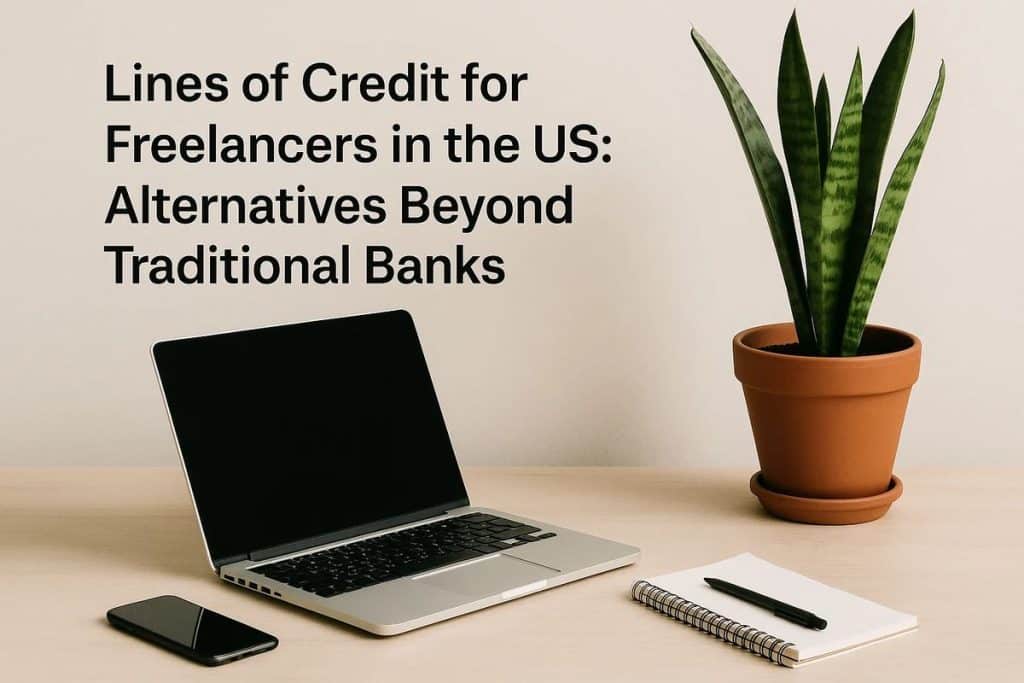Freelancers in the United States often face financial hurdles when seeking traditional financing options due to unpredictable income patterns. When it comes to acquiring loans, freelancers may find themselves in need of alternatives beyond conventional banking institutions.
Whether you need funds for business expansion or managing cash flow during lean periods, there are options designed specifically for the gig economy. This article delves into these financial instruments, shedding light on how freelancers can leverage them to sustain and grow their operations effectively.
Exploring financial avenues for freelancers

The freelance economy has seen remarkable growth, prompting financial innovation to meet the needs of this sector. While traditional banks require rigorous documentation and steady income proof, many freelancers struggle to meet these demands. Alternative financial institutions, however, offer a plethora of services similar to traditional loans but with more flexible criteria.
Some online lenders specialize in offering tailored products for independent workers, where the borrowing process is often streamlined and faster. These lenders assess risk by considering factors such as recent bank statements, transaction history, and online reviews rather than a one-size-fits-all credit rating.
Peer-to-peer and community-based lending
In addition to online lenders, freelancers can explore peer-to-peer (P2P) lending options and community-based financing. P2P platforms, which connect borrowers directly with individual investors, can provide more competitive interest rates and flexible terms. These platforms often focus on assessing the borrower’s trustworthiness through social proof, advanced technological assessments, and personal narratives rather than just traditional financial metrics.
Community-based options, like local lending circles or microfinance institutions, can also be vital for freelancers. These groups offer personal connections and a sense of accountability that may lead to more favorable terms for the borrower. Engaging with these alternatives can not only boost your financial security but also reinforce networks within the freelance community for future support and collaboration.
Making informed financial decisions
Deciphering the diverse financial avenues available requires careful consideration of various elements, including interest rates, repayment flexibility, and lender credibility. Understanding the detailed functionalities and structures of these alternatives will enable freelancers to make informed decisions and avoid pitfalls associated with predatory lending practices.
Investigating each option thoroughly, by reviewing terms and conditions, and consulting other freelancers who have navigated similar paths, can build confidence in the choices you make. Staying informed about market trends and developments in freelance financing can not only aid current credit needs but also prepare for future financial challenges and opportunities that may arise in your freelancing journey.
Implementing practical strategies for financial management
Ultimately, the goal is to blend these financial resources effectively into your business strategy. Set realistic financial goals based on current earnings and potential growth, ensuring that loan obligations align with your projected cash flow. Create a structured repayment plan that accommodates fluctuating income without compromising your lifestyle or business operations.
Maintain an open line of communication with lenders to renegotiate terms if needed, cultivating a cooperative relationship that benefits both parties. Additionally, diversifying your revenue streams as a freelancer can provide a buffer against financial instability, lessening the reliance on borrowing. By adopting these practical strategies, freelancers can secure their financial footing and focus on thriving in their chosen fields.
Conclusaion on the theme discussed
Navigating the financial landscape as a freelancer can be daunting, but understanding the alternatives to traditional banking illuminates a pathway towards financial stability. With options ranging from online lenders to communal lending initiatives, self-employed individuals can secure the resources they need without cumbersome prerequisites.
The key lies in thoughtful research, strategic planning, and leveraging peer networks for support. As the freelance market continues to expand, staying informed about emerging financial tools will empower you to take control of your financial future, ensuring a prosperous and sustainable career.

